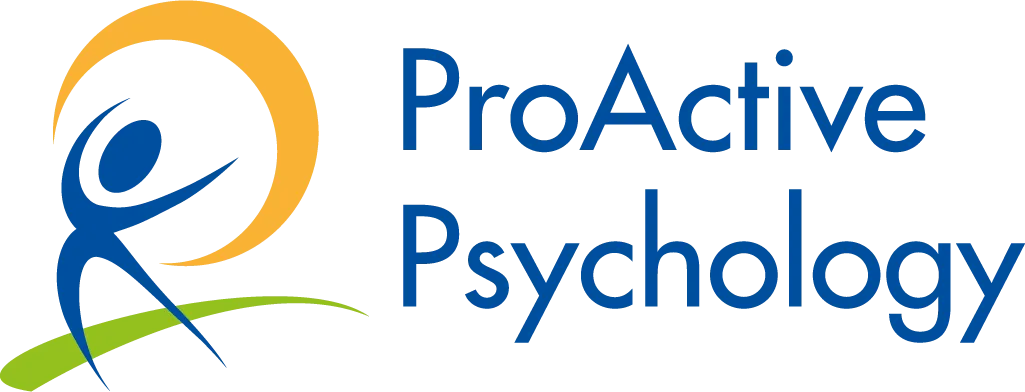
Many parents find themselves wondering whether their child has ADHD, or autism, or both. These conditions share overlapping traits, making it difficult to tell them apart. One moment, a child might show signs of ADHD—restlessness, impulsivity, and constant movement. Next, they might display characteristics more aligned with autism—difficulty with social interactions, repetitive behaviours, or a strong preference for routines.
Overall, you want a clear, straightforward way to understand what’s happening with your child so you can get the right support.
ADHD and autism are distinct conditions with unique traits, even though they sometimes overlap. Think of ADHD as a race car with weak brakes, constantly moving and switching focus. Autism, on the other hand, is like a train on a set track, preferring structure and struggling with unexpected changes.
By understanding how ADHD and autism show up in daily life, it becomes easier to identify patterns, seek professional advice, and take the needed steps toward an accurate diagnosis.

ADHD or Autism: Differences in Attention and Focus
ADHD and autism both affect focus but in very different ways.
A child with ADHD struggles to maintain attention on anything for an extended period unless it is something highly stimulating. Their brain craves novelty and excitement, which is why tasks like homework, chores, or listening to instructions feel difficult.
- Frequently distracted by external noises, movements, or even their own thoughts
- Impulsive, often acting before thinking
- Restless, constantly moving or talking
- May hyperfocus on certain activities, but only for short bursts
Autistic children often experience hyperfocus, meaning they can spend hours on a single topic of interest but struggle to engage with subjects outside their preferred areas.
- Deeply invested in specific interests, such as animals, numbers, or mechanics
- Struggle to shift focus once locked into a task
- Prefer routine and predictability when engaging in activities
If a child jumps from one task to another and struggles to focus on anything for long, ADHD may be the cause. If they hyperfocus on a particular subject and resist switching to new activities, autism could be a stronger factor.
ADHD or Autism: Differences in Social Interaction
Social skills are another key area where ADHD and autism differ.
Children with ADHD are often eager to engage with others but struggle with impulse control and reading social cues. They may interrupt conversations, talk excessively, or struggle with turn-taking in discussions. They crave social interaction but often find it challenging to navigate friendships.
- Difficulty waiting for their turn to speak
- Talkative, sometimes dominating conversations
- Unaware of when they are frustrating others
Autistic children may struggle with social interactions in a different way. Many have difficulty understanding social rules, body language, or facial expressions. Some may avoid eye contact or struggle to maintain a back-and-forth conversation.
- May seem uninterested in social interactions or prefer solo activities
- Struggle to interpret facial expressions, tone of voice, or sarcasm
- Prefer structured social interactions and may repeat phrases instead of engaging in spontaneous conversation
If a child is talkative but has trouble with timing and interruptions, ADHD may be the cause. If they avoid conversations altogether or struggle with back-and-forth communication, autism might be the underlying condition.
ADHD or Autism: Differences in Sensory Sensitivities
Sensory processing issues are common in autism but can also appear in children with ADHD. The key difference is in how these sensitivities are displayed.
Children with ADHD may seek out sensory input, constantly touching objects, fidgeting, or engaging with their environment in a high-energy way. They do not necessarily feel overwhelmed by sensory input but may be easily distracted by their surroundings.
- Frequently touching different textures and objects
- Enjoying loud noises or high-energy environments
- Constantly moving and seeking stimulation
Autistic children often experience sensory overload. Loud noises, bright lights, and unexpected touches can be distressing. They may react strongly to certain textures in clothing or food and avoid overwhelming environments.
- Covering their ears in noisy places
- Refusing certain foods due to texture sensitivity
- Becoming anxious in bright or crowded spaces
If a child is constantly seeking new sensory experiences, ADHD is more likely. If they react negatively to loud noises, bright lights, or unexpected touches, autism is more likely.
When ADHD and Autism Occur Together
Some children are diagnosed with both ADHD and autism, known as a dual diagnosis. This can make distinguishing between the two conditions more complex.
- A child may be highly social and impulsive (ADHD) but struggle to interpret social cues (autism)
- They may be easily distracted (ADHD) but also strongly attached to routines (autism)
- Sensory sensitivities may fluctuate, with moments of seeking input and moments of avoidance
A professional assessment is necessary to determine whether a child has ADHD, autism, or both. A qualified psychologist can evaluate behaviour, attention, and social interaction patterns to provide a more precise diagnosis.
Next Steps for Parents
If you suspect your child may have ADHD or autism, taking proactive action can lead to better support and resources.
- Observe and take notes – Track behaviours in different situations to identify patterns.
- Seek a professional assessment – A psychologist, pediatrician, or developmental specialist can conduct a thorough evaluation.
- Find support – Parenting neurodivergent children can be challenging, but connecting with support groups and resources can help.
- Focus on strengths – Whether a child is highly creative, detail-oriented, or energetic, every child has unique strengths that can be nurtured.
Book a Professional ADHD or Autism Assessment
If you are concerned about your child’s behaviour and want clarity on whether they have ADHD, autism, or both, a professional assessment is the best next step.
ProActive Psychology has been supporting children and parents for years with comprehensive ADHD and autism assessments. Our experienced team provides clear, actionable guidance to help families understand their child’s unique needs and access the right resources.
Book an assessment today and get the answers you need. Contact ProActive Psychology to schedule your consultation.

References
ADDitude Magazine (n.d.). Is it ADHD or ASD? [online] Available at: https://www.additudemag.com/is-it-adhd-or-asd/ [Accessed 25 Feb. 2025].
ADDitude Magazine (n.d.). Adult autism symptoms and ADHD. [online] Available at: https://www.additudemag.com/adult-autism-symptoms-adhd/ [Accessed 25 Feb. 2025].
CHADD (Children and Adults with Attention-Deficit/Hyperactivity Disorder) (n.d.). Understanding and differentiating between autism and ADHD. [online] Available at: https://chadd.org/attention-article/understanding-and-differentiating-between-autism-and-adhd/ [Accessed 25 Feb. 2025].
CHADD (n.d.). ADHD myths and facts. [online] Available at: https://chadd.org/about-adhd/myths-and-misunderstandings/ [Accessed 25 Feb. 2025].
HealthyChildren.org (n.d.). Common myths and misconceptions about ADHD. [online] Available at: https://www.healthychildren.org/English/health-issues/conditions/adhd/Pages/Myths-and-Misconceptions.aspx [Accessed 25 Feb. 2025].
Kennedy Krieger Institute (n.d.). Myths and facts about autism spectrum disorder. [online] Available at: https://www.kennedykrieger.org/stories/myths-facts-about-autism-spectrum-disorder [Accessed 25 Feb. 2025].
Medical News Today (2019). What is the difference between ADHD and autism? [online] Available at: https://www.medicalnewstoday.com/articles/325618 [Accessed 25 Feb. 2025].
New Vision Psychology (n.d.). ADHD vs. autism: Understanding the differences. [online] Available at: https://newvisionpsychology.com.au/adhd-sydney/asd-vs-adhd/ [Accessed 25 Feb. 2025].
Scope Australia (n.d.). Autism vs. ADHD: Explaining the difference between the two. [online] Available at: https://www.scopeaust.org.au/news/autism-vs-adhd-explaining-the-difference-between-the-two [Accessed 25 Feb. 2025].
Treetop Therapy (n.d.). ADHD vs. autism: Key differences in diagnosis and treatment. [online] Available at: https://www.thetreetop.com/aba-therapy/adhd-vs-autism [Accessed 25 Feb. 2025].
Understood.org (n.d.). The difference between ADHD and autism. [online] Available at: https://www.understood.org/en/articles/the-difference-between-adhd-and-autism [Accessed 25 Feb. 2025].
Verywell Health (2021). Autism vs. ADHD: How to tell the difference. [online] Available at: https://www.verywellhealth.com/autism-vs-adhd-5213000 [Accessed 25 Feb. 2025].
WebMD (n.d.). ADHD or autism? How to differentiate the symptoms. [online] Available at: https://www.webmd.com/add-adhd/childhood-adhd/adhd-or-autism [Accessed 25 Feb. 2025].


